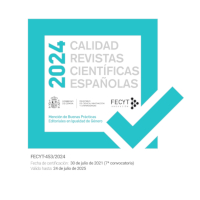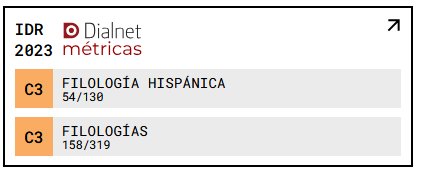"Antígona González" by Sara Uribe as a collective arrangement of utterance
DOI:
https://doi.org/10.18172/cif.5363Keywords:
Antígona González, Collective Arrangement of Utterance, silence, intertextuality, contemporary poetryAbstract
In Antígona González, Sara Uribe shapes a powerful collection of poems from an ensemble of various discourses and intertextual references. In addition to the obvious resignification of the classic character of Antigone and its multiple variations in the context of violence in Latin America, Uribe also reuses newspapers, testimonies of the families of the missing, academic texts and even the work of Juan Rulfo´s, to represent the tragedy of irrational violence in contemporary Mexico. However, far from putting the focus on explicit violence against the bodies, Uribe chooses a little-explored angle in Mexico: the drama of the missing and the search by the relatives. In Uribe's magnificent collection of poems, Antigone is a Collective Arrangement of Utterance that speaks for all the direct or collateral victims of contemporary violence.
Downloads
References
ALICINO, L. (2020). “El cuerpo colectivo de Antígona: mito y reescrituras en Antígona González de Sara Uribe”. Rassegna iberistica, 114, 321-340.
BOLTE, R. (2017). “Voces en off: sobre el desplazamiento del decir poético frente a la violencia. Manca de Juana Adcock y Antígona González de Sara Uribe”. Tintas. Quaderni di letterature iberiche e iberoamericane, 7, 59-78.
CANTARELLO, M. (2020). “Writing about Crime in Absentia: The Case of Sara Uribe’s Antígona González”. Confluenze. Rivista di Studi Iberoamericani, 12 (1), 161-182.
CRUZ ARZABAL, R. (2015). “Escritura después de los crímenes: dispositivo, desapropiación y archivo en Antígona González de Sara”. En Quijano, M. y Fernando Vizcarra, F., Crimen y ficción. Narrativa literaria y audiovisual sobre la violencia en América Latina. México, Universidad Nacional Autónoma de México, pp. 315-337.
DELEUZE, G. y GUATTARI, F. (2008). Kafka, por una literatura menor. México, Era.
GARCÍA CABRERA, E. y ALIRANGUES LÓPEZ, M. (2019). “Duelo y memoria de los cuerpos ausentes en Antígona González”. Impossibilia. Revista Internacional de Estudios Literarios, 18, 36-65.
MARTÍNEZ, Ó. (20016). “Los coyotes domados”. Una historia de violencia. Vivir y morir en Centroamérica. México, Penguin Random House, pp. 183-201.
ORTEGA, J. (2010). “Juzgar: Rulfo y el desierto paterno”. El sujeto dialógico. Negociaciones de la modernidad conflictiva. México, Fondo de la Cultura Económica, pp. 263-281.
OSORNO, D. E. (2017). La guerra de Los Zetas. México, Penguin Random House.
RIFFATERRE, M. (1978). Semiotics of poetry. Bloomington; Londres, Indiana University Press.
RULFO, J. (1997). Pedro Páramo. México, Fondo de la Cultura Económica.
URIBE, S. (2012). Antígona González. México, El Quinqué Amarillo.
URIBE, S. (2017). “¿Cómo escribir poesía en un país en guerra?” Tintas. Quaderni di letterature iberiche e iberoamericane, 7, 45-58.
Downloads
Published
How to Cite
Issue
Section
License
Copyright (c) 2022 Felipe Oliver Fuentes

This work is licensed under a Creative Commons Attribution 4.0 International License.
The authors retain copyright of articles and authorize CIF the first publication. They are free to share and redistribute the article without obtaining permission from the publisher as long as they give appropriate credit to the editor and the journal.
Self-archiving is allowed too. In fact, it is recommendable to deposit a PDF version of the paper in academic and/or institutional repositories.
It is recommended to include the DOI number.
This journal is licensed under a Creative Commons Attribution 4.0 International License














